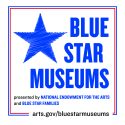Regarding democracies, according to Pew Research, “Concern has been growing for the past several years about the future of democracy, and there is considerable dissatisfaction in many countries with how democracy is working in practice. But public support for democratic ideals remains strong, and by one measure, global democracy is at or near a modern-day high.” Maintaining a democracy means more than staying informed and voting. Civic research and participation are necessary and practical ways of ensuring that as many voices as possible are heard and thoughtfully considered. Democracies since Athens are known to be fragile and stand or fall with civil participation.

Museums have a role to play in democracies. Art works are historical artifacts that document the past’s social and cultural values. The best of these objects resonate for future generations. (Museums are not perfect and like society itself, constantly working to understand and embrace the evolution of cultural values.)
Significant historical visual art works add depth and weight to the conversion, and may join with other important modes of culture in conversations on social and moral values.
Such modes of culture include the writers of novels and movies, but also television and comedians. Consider movies like The Black Panther and the 1977 television series Roots. I am thinking of writers and comedians who have impacted culture like Jonathan Swift to Ambrose Bierce to Will Rogers to Lenny Bruce.
Writers, comedians, movies, and television speak in a language easily understood. The best grapple with serious issues and more often than not open complex social issues from differing points of view.
O. Henry wrote short stories about ordinary people bringing a certain juxtaposition of ironic fate and affection for his cast of characters — tramps, shop girls, the lowly and humble — who were often overlooked in society. Henry’s subjects echo his contemporary the Ashcan School leader Robert Henri. Recognizing the ordinary man and woman is something Henri, Cassatt, and O. Henry shared.

Short-story writer and satirist Ambrose Bierce specialized in critiques of frauds of all sorts and stories revealing the accidents and coincidences of life. Bierce was a contemporary of the painter and teacher Thomas Eakins. Eakins likely read Bierce and appreciated Bierce’s perspectives on life. During his time, Eakins was forced to hide his love of Samuel Murray.

The visual arts joins these various modes of culture offering differing perspectives on a host of important issues. In Cedarhurst’s own collections, Mary Cassatt, Henri, Eakins, George Bellows, Paul Strand and others from time to time have pointed out the social inequalities in life.
In 2015 I wrote an essay for the exhibition Representing Labor which examined how the visual arts play a role in representing civic discourse and museums functioning as a democratic forum. Some excerpts follow below.
“This essay explores how images establish identity in social and cultural contexts by examining art’s functions with Representation, Democracy, Empathy, and the Museum as Public Forum.
Through our cultural processes we create, perhaps the most important meaning, Identity, both for individual selves and the communities we live in. How culture creates identity is a process that can be studied through the visual arts.
What museums do best is present and evaluate how the signs and symbols found in paintings, sculptures and other works of fine art accrue meaning, value, and social significance. Examining these social mechanisms by which art works become imbued with meaning may be useful for examining how meaning accrues elsewhere in culture [such as memes in social media].
Democracy is the quintessential civic forum where the meanings socially constructed in Representation can be negotiated. The raison d’être of a democracy is to have collective rule by the people who consider, weigh, negotiate, and finally compromise on differing viewpoints. The synonym for democracy is compromise.
Empathy is the moral engine that drives social relationships and keeps democracy vibrant. Empathy is less about “wearing the other person’s shoes,” or feeling sorry for the disenfranchised, and more about recognizing the value one has for oneself and in turn seeing that self same value in every other human life.
It is within these social apparatuses—Representation, Democracy, Empathy—that museums may strive as public forums for discussion of the social issues of the day.
One of the ways museums address cultural understanding is through the art exhibition. The exhibition is the presentation of voices through the visual arts.
By encouraging visitors to regard any exhibition as a public forum, the power begins of the visual arts as catalyst.
Museums have long been functioning as micro-forums of democracy.
Because museums have historically shown [the] art dedicated to social change, it may be that in the early 21st century with the shift towards the needs of the audience, that museums become more involved as social agents of change.”





